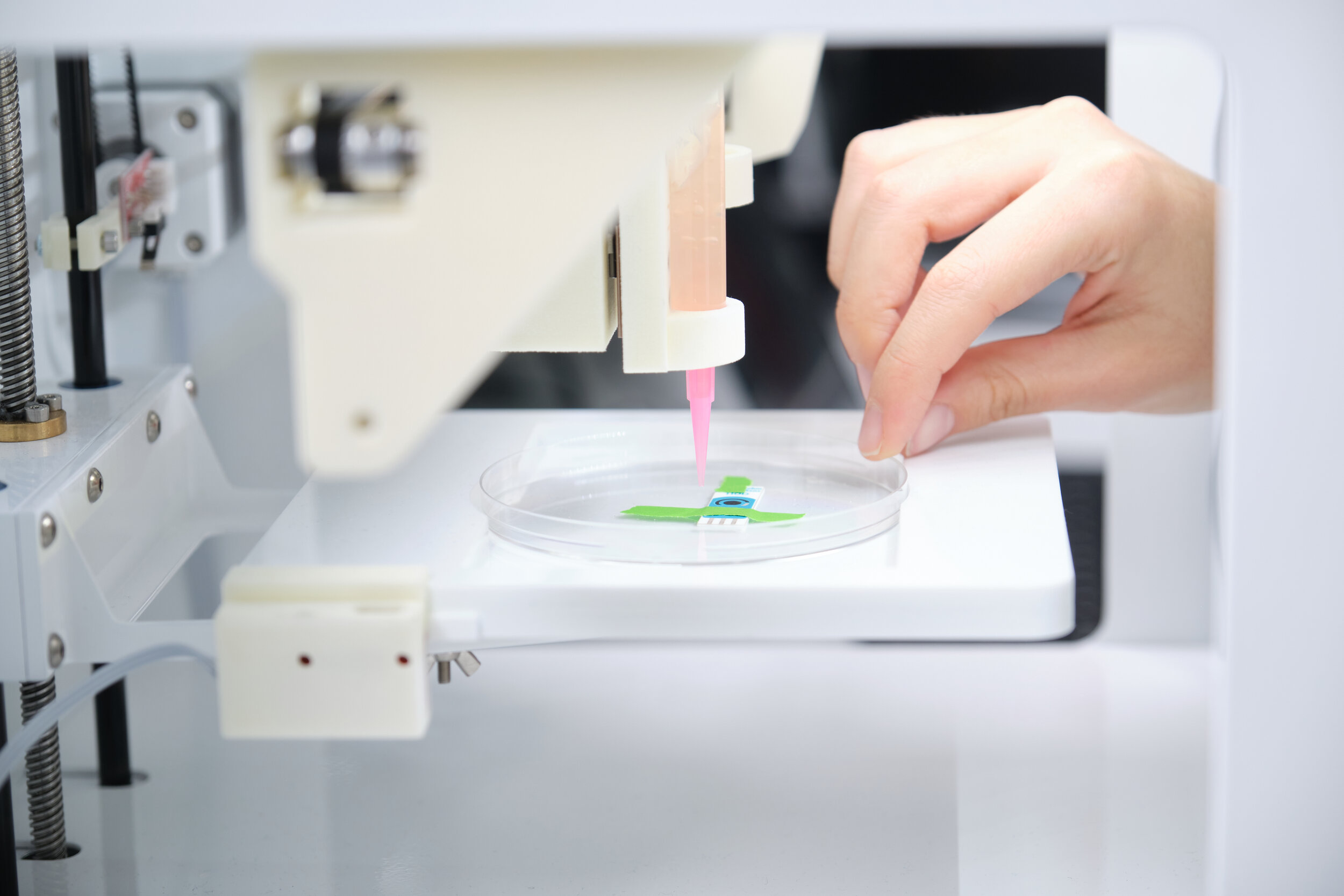Tissue Engineering (TE) has shown the potential to transform the medical practice by replacing current therapies such as prosthetics with living, growing tissue. This has enabled an array of benefits for the patient including, but not limited to, the prevention of re-intervention surgery, removal of lifelong anti-coagulation therapy and the delivery of patient specific medical devices.
The principle of TE relies on the use of a scaffold, which organises cells in the third dimension, allowing and encouraging cells to grow and deposit new functional living tissue. TE can be broadly categorised as either in-vitro or in-situ. In-vitro TE is the traditional approach that has existed for well over 20 years, whereby the cells are seeded and grown on the scaffold in a controlled environment in the laboratory, and then implanted in the body. Alternatively, in-situ TE involves implanting cell-free biodegradable scaffolds into the patient, allowing the human body’s inflammatory response to carry out the complex process of endogenous tissue regeneration onto the scaffold.
We develop various TE devices and technologies, focussing primarily on applications for cardiovascular disease, including heart valves, solutions for TBAD, and Aortic Stent Grafts. In addition we are also working in the space of TE tendon & ligament grafts and wound healing.

